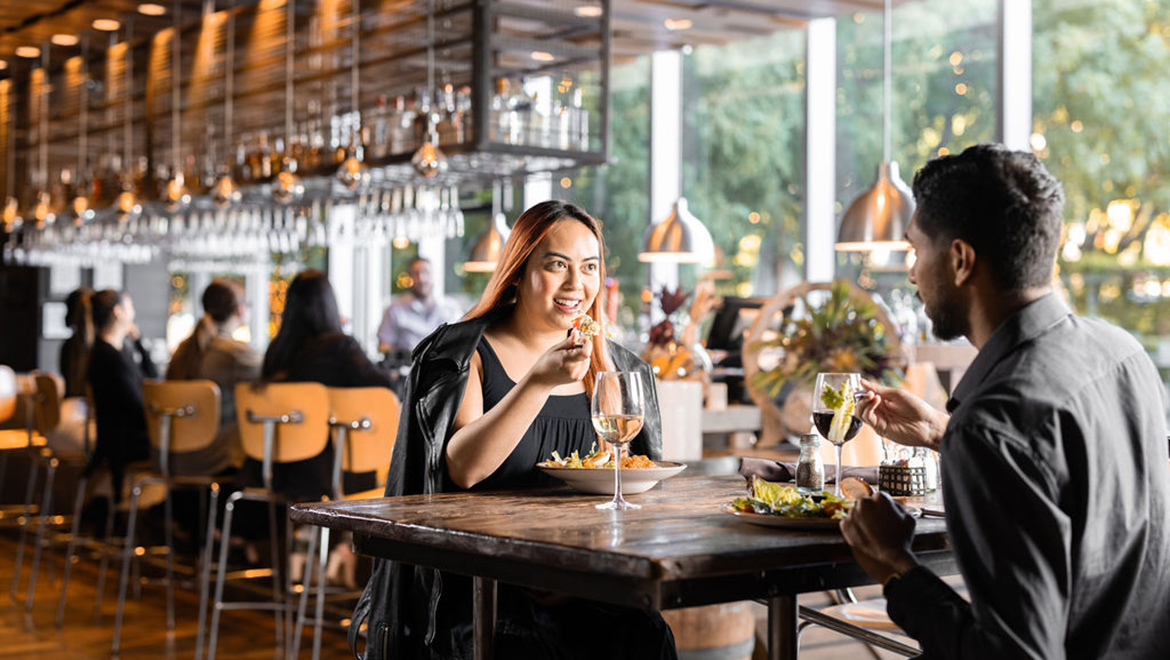Vegetarian and vegan-friendly restaurants Lockhart you should try.
Vegetarian and vegan-friendly restaurants Lockhart you should try.
Blog Article
Why Dining at Regional Restaurants Supports Your Neighborhood and Delights Your Taste
Eating at neighborhood dining establishments provides even more than just a meal; it serves as an important element in supporting community vitality and economic durability. What might this indicate for the future of neighborhood dining and neighborhood connection?
Economic Effect of Neighborhood Dining

The economic impact of local dining extends much past the dining establishment itself, affecting a vast array of markets within the area. Neighborhood dining establishments play a crucial duty in promoting economic development by developing tasks, sustaining neighborhood distributors, and adding to metropolitan revenues. When customers pick to eat at local facilities, they aid receive work for cooks, web servers, and upkeep staff, thus improving the local job market.
Moreover, regional dining establishments usually resource active ingredients from neighboring farms and producers, fostering a durable supply chain that benefits various agricultural markets. This method not only sustains regional economies however also encourages lasting farming practices. In addition, the sales tax produced from these restaurants adds to necessary public services, such as education and learning and infrastructure, which better improves area lifestyle.
Additionally, neighborhood eating establishments frequently cultivate a sense of community, bring in locals and visitors alike, which can lead to raised foot website traffic in bordering companies. This interconnectivity amongst local business improves financial resilience, producing a vibrant and sustainable area ecological community. Basically, the assistance of local dining is an investment in the broader economic wellness of the area, promoting development and sustainability for future generations.
Unique Cooking Experiences

Furthermore, lots of neighborhood establishments welcome farm-to-table techniques, highlighting the value of seasonal produce. Restaurants can appreciate the freshness of active ingredients sourced from nearby ranches, which not only improves taste yet also promotes a connection to the regional landscape. This dedication to top quality and locality sets the phase for distinctive culinary experiences that are usually absent in chain restaurants.
In addition, local cooks regularly trying out blend food, blending diverse cooking practices to develop interesting new recipes. Such advancement not only tantalizes the palate but also encourages daring eating, welcoming customers to broaden their cooking horizons. Involving with regional restaurants allows restaurants to delight in meals that are not practically nutrition, however regarding the creativity and passion that specify the cooking world, making every dining experience really distinct and wonderful.
Fortifying Neighborhood Bonds
Dining at regional restaurants plays a pivotal duty in enhancing community bonds by cultivating connections among homeowners. These establishments function as essential gathering areas where people can participate in purposeful conversations, share experiences, and create long lasting memories. As patrons constant the same neighborhood areas, they cultivate a feeling of familiarity and friendship, strengthening social ties within the area.
Furthermore, regional restaurants usually show the distinct cultural material of their neighborhoods, showcasing regional click this practices and culinary site link heritage. This event of local society not just improves area identification yet likewise urges locals to take satisfaction in their surroundings. By taking part in the local eating scene, people add to a shared story that binds them together.
Community events organized at dining establishments, such as open mic nights, fundraising events, or food celebrations, further improve these links. They provide opportunities for partnership and interaction amongst diverse groups, promoting inclusivity and understanding. As homeowners collect to support neighborhood businesses, they all at once support each other, developing an interconnected network that reinforces the area's durability.
Basically, dining at regional dining establishments is not merely concerning food; it is an enriching experience that strengthens area bonds and grows a dynamic, united neighborhood society.
Sustaining Local Farmers and Manufacturers

This practice minimizes transport prices and exhausts, advertising ecological sustainability while additionally enhancing the flavor and high quality of the meals offered. Seasonal food selections, which highlight local fruit and vegetables, permit restaurants to use distinct cooking experiences that reflect the region's agricultural bounty.
In addition, sustaining neighborhood farmers aids maintain traditional farming practices and urges biodiversity. It encourages small-scale producers, allowing them to grow in a progressively industrialized food system. As regional restaurants choose to partner with these farmers, they aid keep a vivid farming neighborhood, making sure that regional food systems remain resilient.
Fundamentally, eating at neighborhood dining establishments is not simply about taking pleasure in a meal; it is an investment in the local economic situation and an affirmation of lasting methods. By picking regional, diners play an important duty in supporting their neighborhoods and sustaining the dedicated individuals that cultivate their food.
Preserving Neighborhood Culture and Heritage
Rooted in the traditions of their communities, neighborhood restaurants work as crucial custodians of social heritage. By showcasing local components and traditional food preparation techniques, these facilities protect the unique tastes and culinary practices that specify local identification. Each dish informs a story, mirroring historical impacts and cultural stories that have formed the neighborhood over generations.
Furthermore, neighborhood restaurants commonly champion classic recipes gave via households, guaranteeing that unique social practices stay active. This not only enlightens patrons concerning the community's heritage however additionally fosters a feeling of pride and belonging amongst residents. The environment, décor, and even songs in these establishments usually echo the regional society, providing a holistic experience that transcends mere dining.
Furthermore, local dining establishments add to the preservation of language and languages, as menus and discussions often include local vernacular. By joining area occasions and celebrations, these restaurants enhance social bonds and advertise social exchange. Basically, dining at regional dining establishments is not just a cooking experience; it is a possibility to involve with and sustain anonymous the abundant tapestry of local culture and heritage, ensuring its continuity for future generations.
Conclusion

Report this page